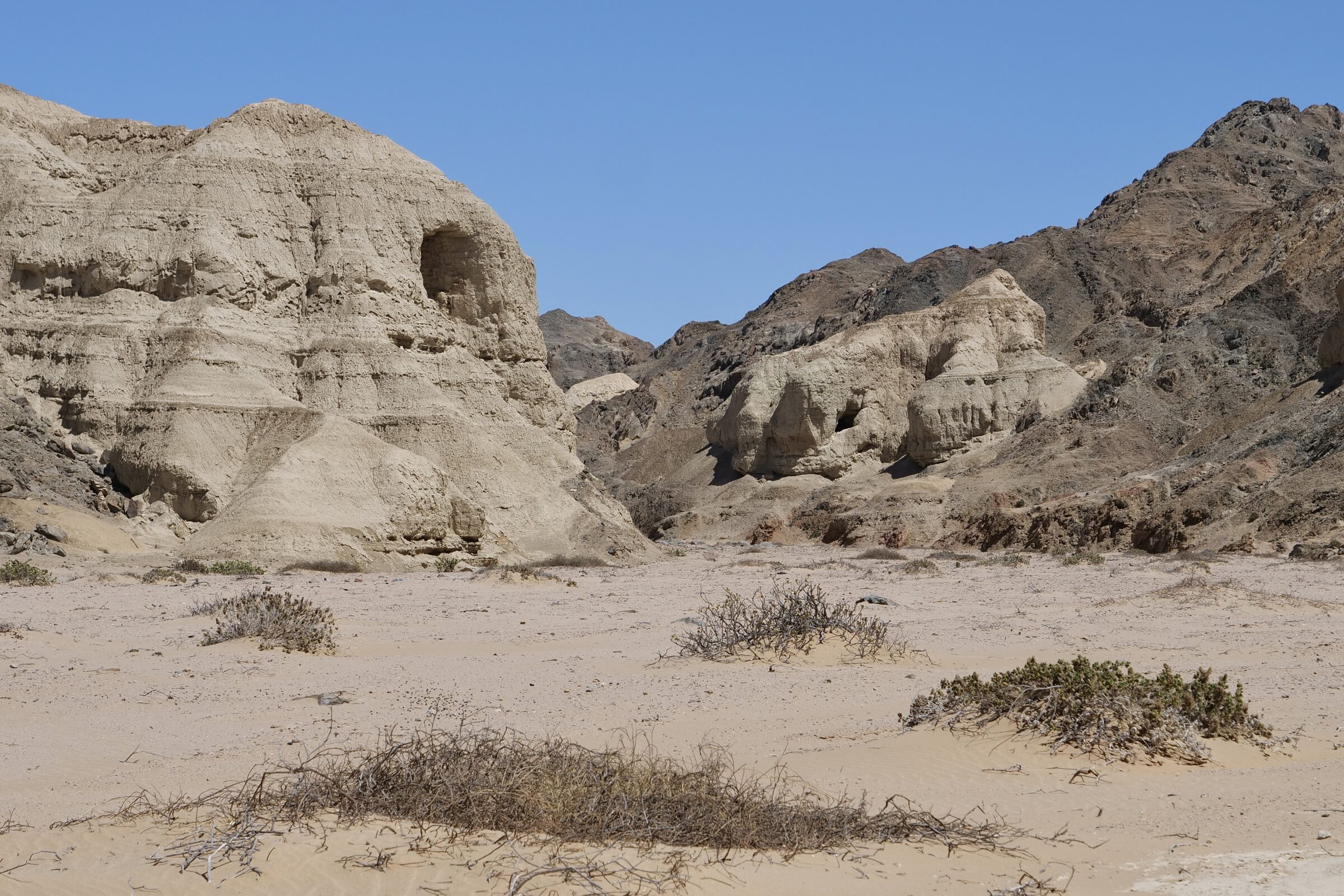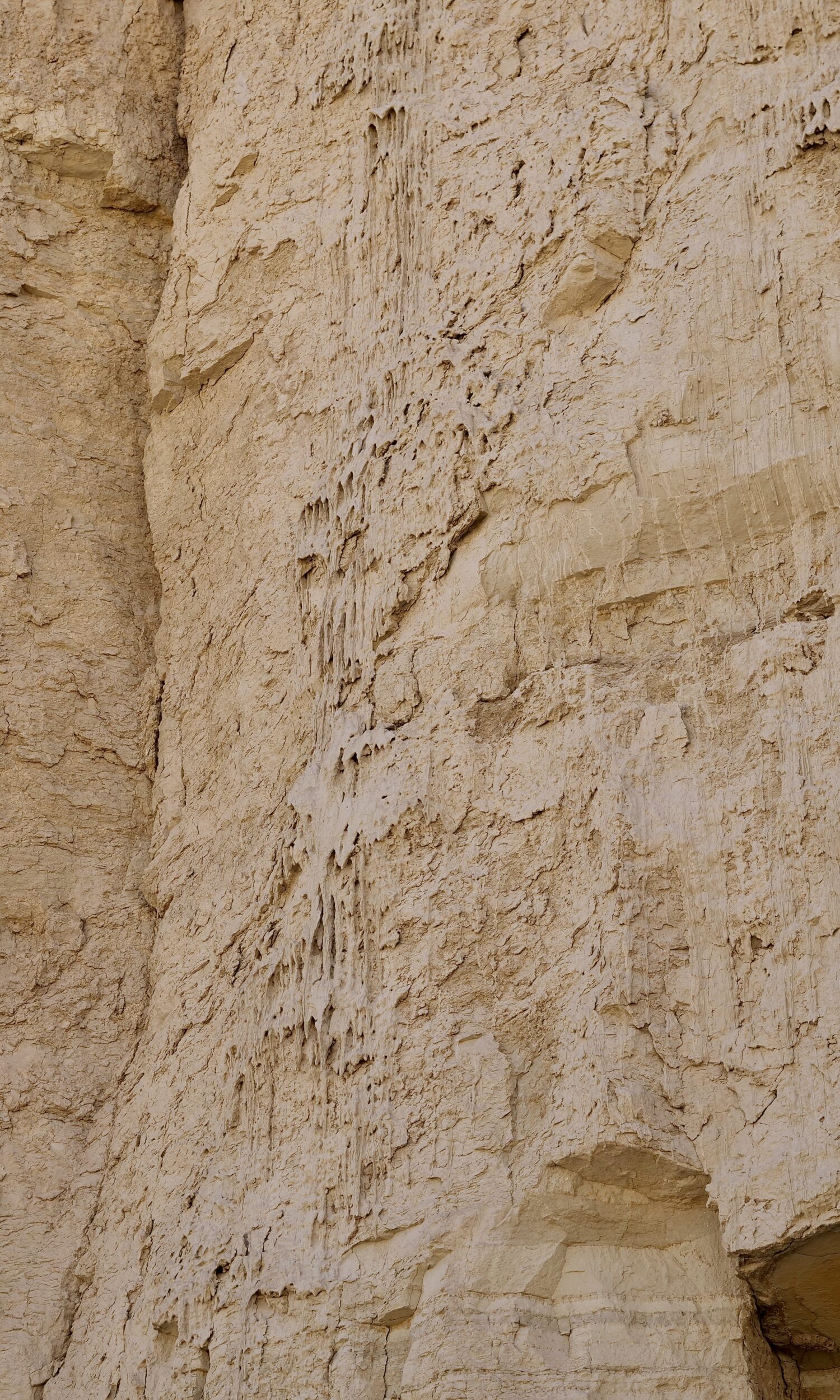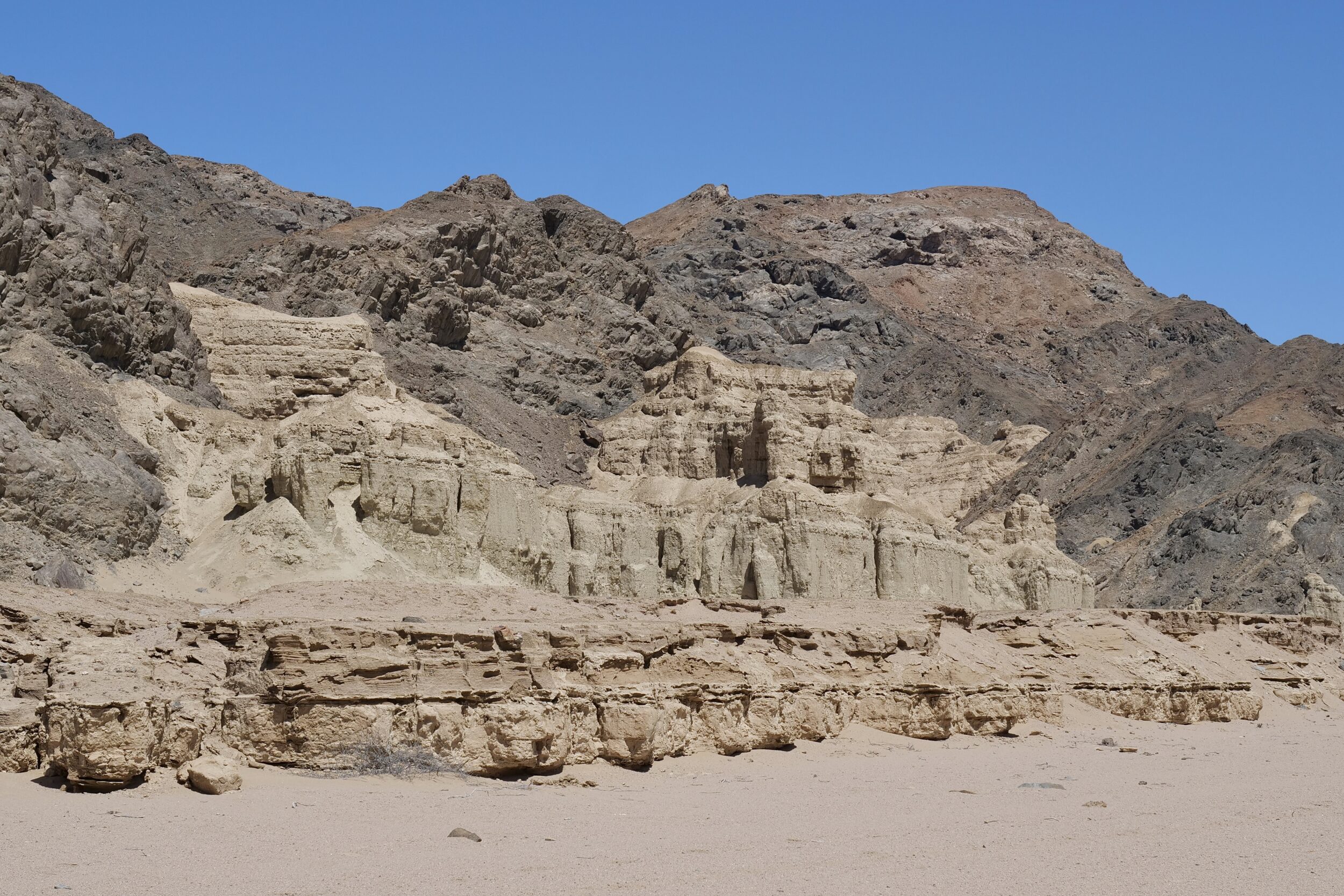A hunch about the “castles”…
A key to their existence and relative longevity may be that their sand/clay arrives suddenly, as silt carried from wetter places, inland – places sometimes scoured by ephemeral rivers in flood.
I am talking of major floods, where the Hoarusib not only manages to send a rush of “stained” water into the Atlantic, but the river’s bed-proper is overwhelmed, and silt laden water “spills” and roars into side-canyons.
The floodwaters soon recede, are absorbed, and/or evaporate, and the silt settles in a place where rain hardly ever falls.
Such major floods – extreme enough to rush into a side-canyon – are very rare events.
Locally, the typically-long periods of absolutely no rain minimise erosion.
Fogs roll in on very many days, providing doses of moisture, very gently – moisture that helps solidify rather than wash away the “castles”.
Those fogs are interspersed by clear skies and relatively gentle temperature shifts, given this location’s proximity to the Atlantic Ocean.
Such conditions, I suspect, would assist in the aggregation of sediments and their “concretion” into “castles”.

My hunch could be utter tosh.
In any event, the “clay castles” are extraordinary, unforgettable.

